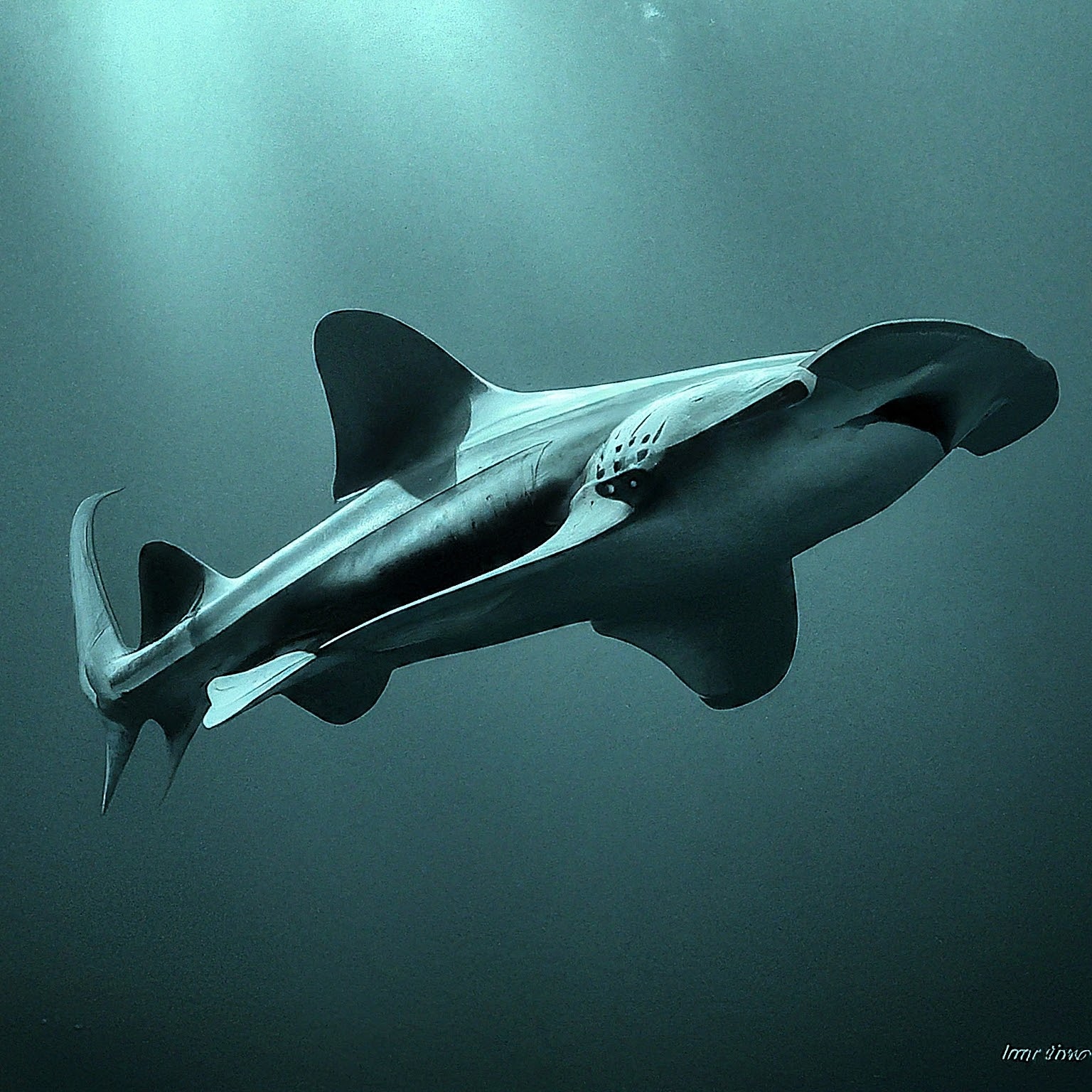
Embark on a journey beneath the waves as we explore the mysterious world of the Elephant Shark, a captivating creature with unique features and a lineage that stretches back millions of years. In this comprehensive guide, we’ll delve into its scientific classification, physical characteristics, distribution, and the conservation challenges it faces.
Elephant Shark Scientific Classification
The Elephant Shark, also known as the Chimaera, holds a distinctive place in the biological taxonomy:
- Kingdom: Animalia
- Phylum: Chordata
- Class: Chondrichthyes
- Subclass: Holocephali
- Order: Chimaeriformes
- Family: Chimaeridae
- Genus: Callorhinchus
- Species: C. milii
This classification places the Elephant Shark within the subclass Holocephali, showcasing its evolutionary divergence from other cartilaginous fishes.
Elephant Shark Identification, Appearance, and Description
The Elephant Shark exhibits a fascinating set of features that distinguish it from other marine species:
- Snout: Elongated snout resembling the trunk of an elephant, giving it its name.
- Body: Slender and covered in rough, tooth-like scales.
- Fins: Dorsal and pectoral fins for navigation and stability.
- Coloration: Typically gray or brown, aiding in camouflage on the ocean floor.
Despite its name, the Elephant Shark is not a true shark but belongs to the subclass Holocephali, which includes chimaeras.
Elephant Shark Types, Species, and Varieties
The Elephant Shark is a representative of the genus Callorhinchus, with the species C. milii being the most well-known. While there are variations in size and coloration, distinct species and varieties are not widely recognized.
Elephant Shark Physical Characteristics
- Rostrum: The elongated snout, resembling an elephant’s trunk, is specialized for detecting prey in the sand.
- Teeth: Modified tooth-like scales cover the skin, aiding in protection and providing a unique texture.
- Pectoral Fins: Large pectoral fins contribute to stable movement and control in the water.
- Dermal Denticles: The skin is covered in dermal denticles, contributing to the rough texture and offering protection.
Elephant Shark Distribution, Migrations, and Habitat
Understanding the Elephant Shark’s distribution and habitat provides insights into its ecological role:
- Distribution: Found in deep waters along the continental shelves of southern Australia and New Zealand.
- Habitat: Prefers sandy or muddy bottoms, where it can use its specialized snout to search for small invertebrates.
Elephant Sharks are adapted to a benthic lifestyle, spending much of their time near the ocean floor.
Elephant Shark Food and Diet
The Elephant Shark sustains itself through a diet primarily composed of:
- Crustaceans: Small crustaceans, such as crabs and shrimp, form a significant portion of their diet.
- Invertebrates: Other bottom-dwelling invertebrates, like worms and small mollusks, contribute to their varied menu.
Their specialized snout allows them to root through the substrate in search of buried prey.
Elephant Shark Reproduction and Lifespan
- Reproduction: Elephant Sharks exhibit oviparity, laying egg capsules rather than giving birth to live young.
- Laying Eggs: Females deposit egg capsules on the ocean floor, where they develop until hatching.
- Lifespan: While specific lifespan data is limited, Elephant Sharks are known for their relatively slow growth and maturation.
Elephant Shark Conservation, Efforts, and Threats
The conservation status of the Elephant Shark is currently of concern due to several factors:
- Bycatch: Caught unintentionally in fishing gear targeting other species, leading to population declines.
- Habitat Destruction: Coastal development and bottom trawling contribute to habitat degradation.
- Low Reproductive Rate: Slow growth and limited reproductive output make recovery from population declines challenging.
Conservation efforts involve fisheries management, monitoring bycatch, and advocating for sustainable practices to protect the Elephant Shark’s habitat.
Elephant Shark Predators and Prey
Predators:
- Large Fish: Larger predatory fish, such as sharks and rays, may prey on Elephant Sharks.
Prey:
- Crustaceans: Small crustaceans constitute a significant part of their diet.
- Invertebrates: Various bottom-dwelling invertebrates serve as additional prey items.
Elephant Shark Attacks
Elephant Sharks are not considered a threat to humans, and incidents of Elephant Shark attacks are exceedingly rare. Their docile nature and preference for deep waters contribute to their minimal interaction with humans.
Elephant Shark Facts: 10 Intriguing Insights
- Ancient Lineage: The Elephant Shark belongs to a lineage that dates back over 400 million years, providing valuable insights into the evolution of cartilaginous fishes.
- Sensitive Snout: The elongated snout is equipped with sensory organs, allowing the Elephant Shark to detect electrical impulses produced by buried prey.
- Unique Reproductive Strategy: Oviparous reproduction, with females depositing egg capsules, is a distinctive feature among chimaeras.
- Camouflage Abilities: The coloration and texture of their skin aid in camouflaging the Elephant Shark against the sandy ocean floor.
- Limited Commercial Value: While caught incidentally, Elephant Sharks have limited commercial value due to their small size and specialized habitat.
- Adaptation to Low-Light Environments: Their habitat in deep waters has led to adaptations for low-light conditions, including specialized eyes.
- Conservation Challenges: The combination of bycatch, habitat destruction, and a slow reproductive rate poses significant challenges to the conservation of Elephant Sharks.
- Global Significance: Studies on the Elephant Shark’s genome have contributed valuable genetic information with potential applications in medical research.
- Bottom-Dwelling Lifestyle: Elephant Sharks are well-adapted to a benthic lifestyle, spending much of their time on the ocean floor.
- Ecological Role: As predators of small invertebrates, Elephant Sharks contribute to maintaining the balance of their deep-sea ecosystem.
Related FAQ’s
Q1: How do Elephant Sharks navigate with their unique snout?
A1: The Elephant Shark uses its elongated snout to detect electrical impulses produced by buried prey, aiding in navigation and foraging.
Q2: Are Elephant Sharks commonly found in aquariums?
A2: Due to their specialized habitat requirements and relatively small size, Elephant Sharks are not commonly found in aquariums.
Q3: What is the significance of studying the Elephant Shark’s genome?
A3: The Elephant Shark’s genome provides important insights into the evolution of cartilaginous fishes and has applications in genetic research.
Q4: How can individuals contribute to Elephant Shark conservation?
A4: Supporting sustainable fishing practices, raising awareness about bycatch issues, and advocating for habitat protection are ways to contribute to Elephant Shark conservation.
Q5: Are Elephant Sharks endangered?
A5: While not currently classified as endangered, Elephant Sharks face conservation challenges, and their populations are monitored to prevent declines.
Conclusion
The Elephant Shark, with its enigmatic features and ancient lineage, offers a glimpse into the marvels of marine life. As we navigate the challenges of conservation, understanding the ecological importance of species like the Elephant Shark becomes crucial. By fostering awareness, supporting sustainable practices, and respecting their unique habitats, we can contribute to the preservation of these remarkable creatures. Let the mysteries of the deep inspire a collective commitment to safeguarding the diversity and beauty that our oceans hold.






